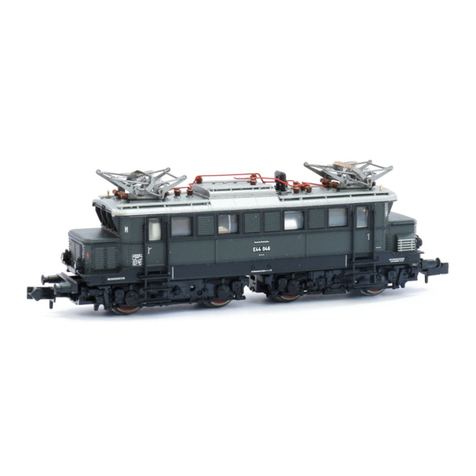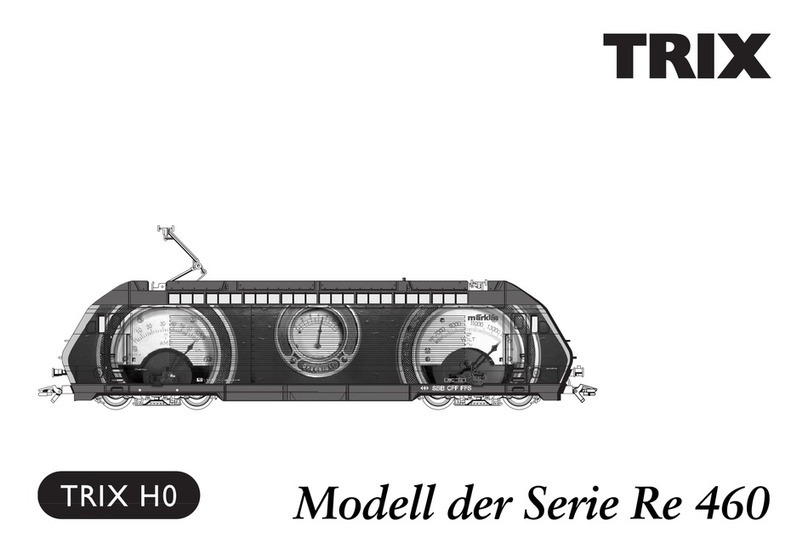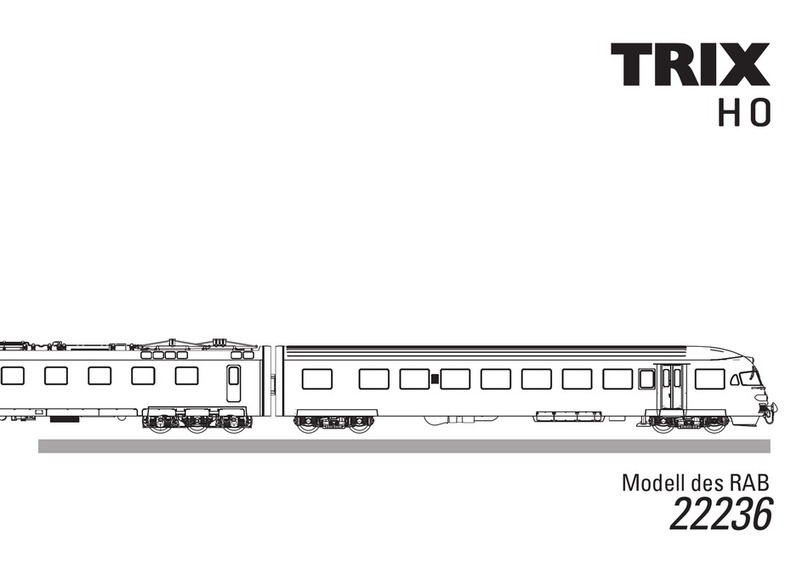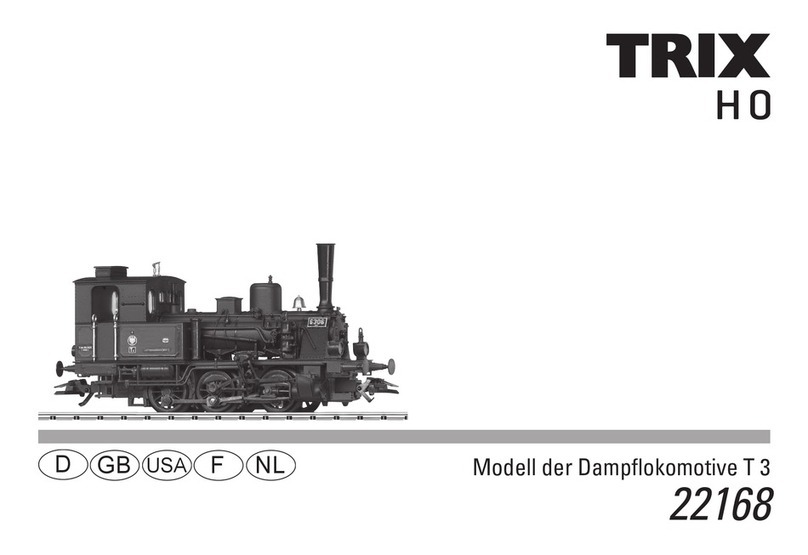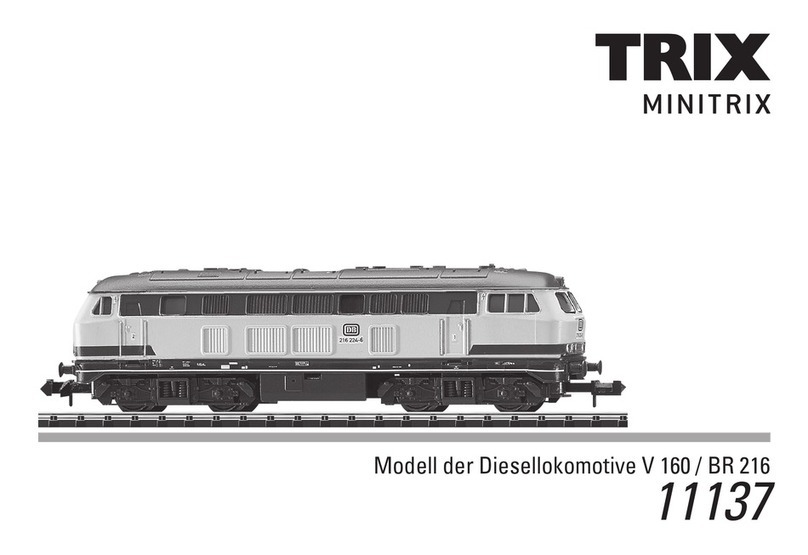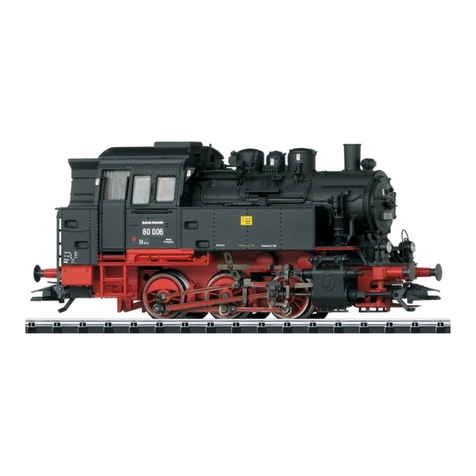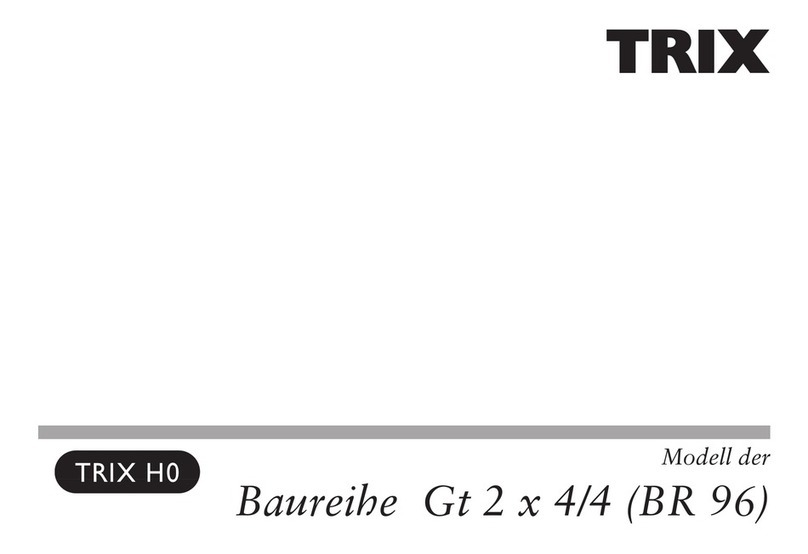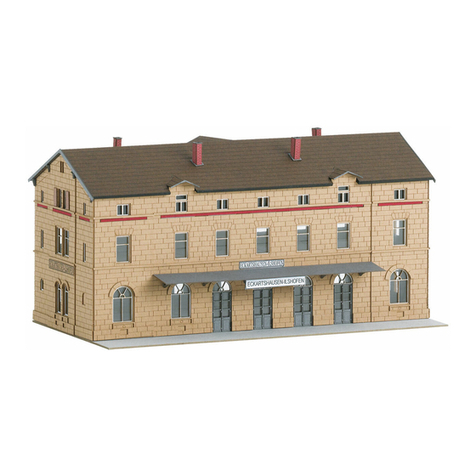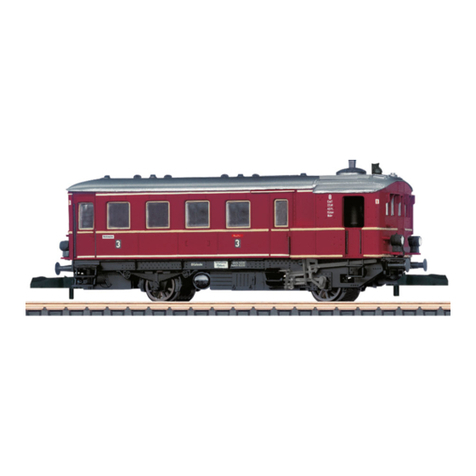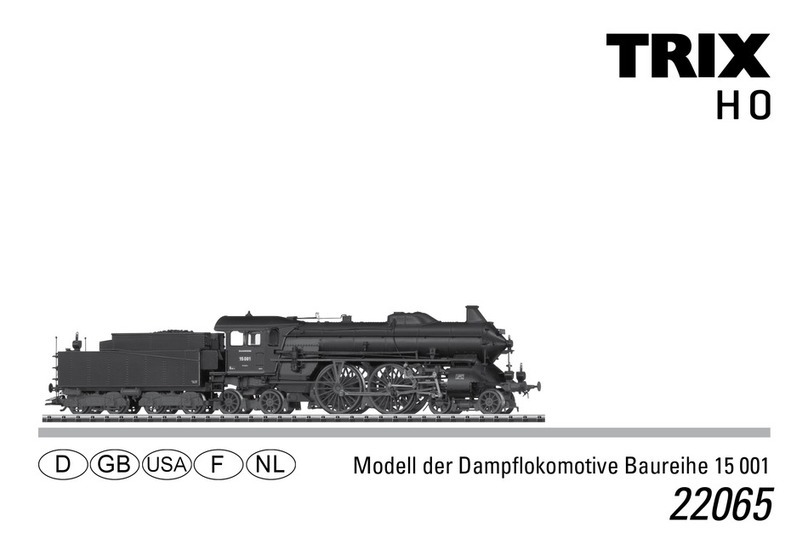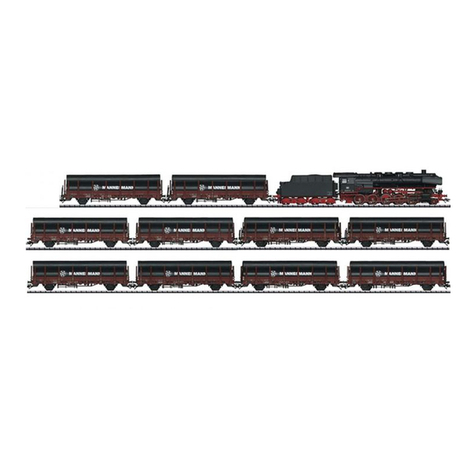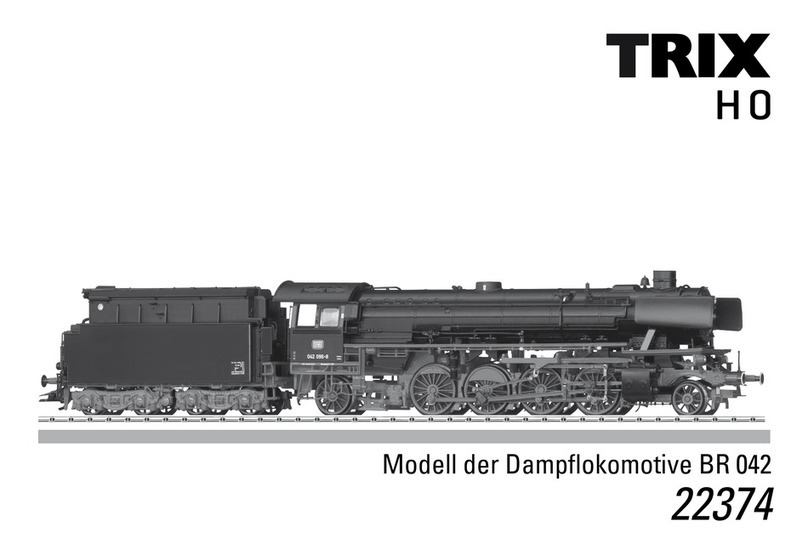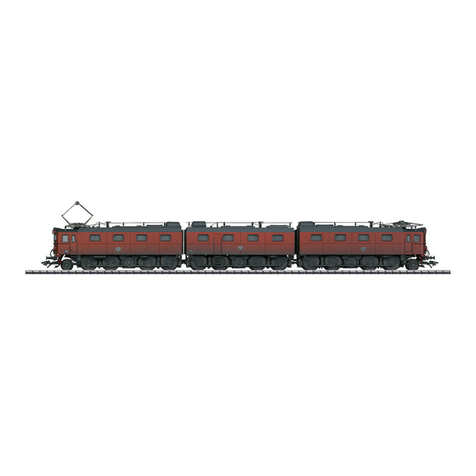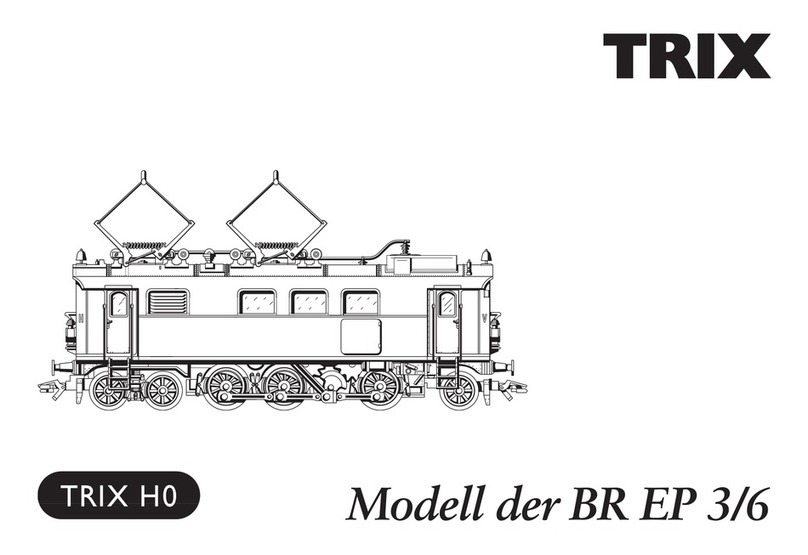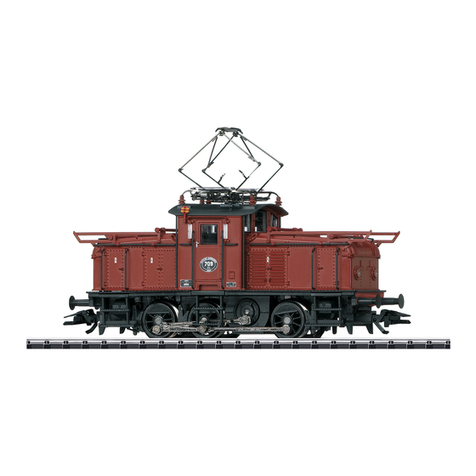5
Informations concernant la locomotive réelle
La locomotive polycourant ES 64 développée par Siemens
Transportation System (TS) a été utilisée dans toute l’Europe
pour le transport de marchandises lourdes. Elle peut fon-
ctionner sur les réseaux à courant alternatif d’Allemagne,
d’Autriche, de Suisse, de Suède et de Norvège (15 kV, 16,7 Hz)
ou du Danemark, du Luxembourg, du nord de la France et de
la Hongrie (25 kV, 16,7 Hz). Son domaine d’utilisation sur les ré-
seaux à courant continu s’étend à la Belgique, à l’Italie et à la
Pologne (3 kV) ou au sud de la France et aux Pays-Bas (1,5 kV).
L’utilisation à l’échelle européenne exigea également une fle-
xibilité élevée en termes de feux de signal : les diverses inten-
sités et couleurs des feux sont obtenues avec la technologie
DEL (diodes électroluminescentes) qui présente de nombreux
avantages, notamment la réduction des défaillances, les diffé-
rentes intensités lumineuses par l’activation ou la désactivati-
on de groupes de DEL, l’intégration de plusieurs couleurs dans
un seul feu ainsi que les faibles pertes thermiques.
Grâce à une petite conversion, la locomotive peut également
être utilisée pour le transport haut de gamme de passagers,
car la vitesse de pointe atteint alors 230 km/h.
Information about the Prototype
The class ES 64 general-purpose locomotive developed by
Siemens Transportation System (TS) was ordered all over
Europe for heavy freight service. It can be run on alternating
current systems in Germany, Austria, Switzerland, Sweden,
and Norway (15 kilovolts, 16.7 Hertz) and in Denmark,
Luxembourg, Northern France, and Hungary (25 kilovolts,
16.7 Hertz). Its area of use on direct current systems ranges
from Belgium, Italy, and Poland (3 kilovolts), to Southern
France and the Netherlands (1.5 kilovolts).
This locomotive’s use all over Europe also requires a high
level of flexibility in the headlights / marker lights used on it:
The lights for different light intensities and colors are done
with LED technology, which has numerous advantages
such as a low probability of malfunctioning, different light
intensities by turning groups of LED’s on and off, integration
of different colors in a light as well as lower losses from heat
generation.
A small conversion process allows this locomotive to also
be used for high quality passenger service in which the maxi-
mum speed is then 230 km/h or 144 mph.
Wheel arrangement B-B
Length over buffers 19 580 mm
Maximum speed 140 km/h
Service weight 87 metric tons
Nominal performance 6 400 kW
Built starting in 2003
Disposition d‘essieux Bo‘Bo‘
Longueur hors tampons 19 580 mm
Vitesse maximale 140 km/h
Poids en ordre de marche 87 t
Puissance nominale 6 400 kW
Année de construction 2003
